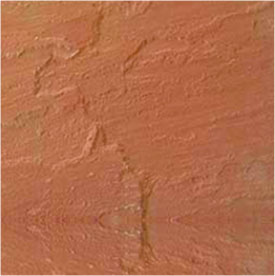Indian Limestone – The Most Sought-after Natural Stone in Modern Architecture
February 23, 2023 Admin
Limestone refers to a sedimentary stone that is predominantly discovered in tropical and partially subtropical locations of shallow water between 30° north and 30° south latitude. Limestone makes up around 10% of all sedimentary rocks on earth, and depending on the environment in which they are located, they can have various and distinctive personality qualities that are reflected in their density, colour, and fossil exposure.
The Formation of Limestone
In general, limestone can be formed in two ways.
Calcium carbonate is used to build the shells and bones of living things including coral, oysters, mussels, clams, and mussels. The accumulation of these decomposed creatures gathers on the ocean floor, where it is further compressed by pounding waves into limestone.
Calcium carbonate-containing water that has been evaporated leaves behind sedimentary formations, including stalactites and stalagmites. These deposits may also be altered by water pressure (waves crashing) if they are created in coastal regions and may eventually transform into limestone.
Due to its impurities, limestone’s colour might vary from its typical light shade of white, brown, or grey. Iron oxide, for instance, will give it a tinge of brown, yellow, or red, whilst carbon may give it a more blue, black, or grey hue.
Limestone Processing
To meet various stylistic and design needs, limestone may be cut into a wide range of shapes and sizes. It also lends itself to a variety of stone finishes and edges suitable for both indoor and outdoor uses. A sandblasted Indian limestone, on the other hand, would fulfil all the criteria for installation around your pool or garden, while a honed limestone would not match the slide resistance requirements for outdoor usage professionally but would be ideal for internal uses.


Limestone Applications
When the proper surface finish is applied, high density limestone that has been carefully chosen and cut into pavers or crazy paving is visually ideal for locations where a more natural atmosphere is wanted and will achieve the requisite slide resistance.
Indian Limestone is a very adaptable natural stone that works well for wall cladding applications, including the smaller free-form stone types seen below or the larger, more textured stone finishes like split or bush hammered.
When choosing natural stones, it’s important to keep in mind that those with a darker colour will absorb heat more quickly. Additionally, the origin of the stone and the process by which it was formed will also have an impact on how much heat is retained, with igneous stones being the hottest (originating from the solidification of lava or magma). This may not be as crucial when choosing wall cladding, but it is crucial to take into account, especially when choosing pavers as you may choose something entirely different to better fit your needs depending on where you put them.
Limestone Benefits
The stone’s resilience to heat is one of the limestone’s much-desired features. When used as kitchen worktops, the stone may be utilized safely for food preparation and is unaffected by hot pots and pans being placed on it. Indian Limestone countertops often have a penetrating sealer to keep the surface clean, although the stone is quite soft and porous.
Limestone may reinforce materials like cement and concrete when it is utilised as a building material. Low-grade limestone, which contains more clay than higher-grade limestone, is frequently used to make cement mixes. Limestone goes through a chemical reaction during the hydration process, creating a substance that is hardened when dried.

Limestone Maintenance
Whether used as a countertop, tile, or flooring, limestone requires a lot of care. Acidic solutions will readily dissolve limestone due to its high calcium carbonate concentration, and when an acidic solution is applied directly to the surface, a bubbling reaction will take place. To prevent damage to the stone, it is advised to coat limestone with a penetrating varnish.
Also, if the stone is left open, moisture can enter into its pores. Avoid using abrasive cleaning equipment to scour the surface since the soft stone is prone to scratching quickly. To protect limestone against deterioration from moisture and grease, it should be sealed along with the grout.
The Conclusion
Today, there are numerous architectures in the world that make the use of Indian limestone. Even, in modern residential architecture, the use of limestone is quite prevalent. Natural limestone’s geological creation is a fascinating topic that enables us to see how nature creates beauty. Also, one of nature’s most intriguing wonders is brought into a domestic environment when this natural stone is employed.








